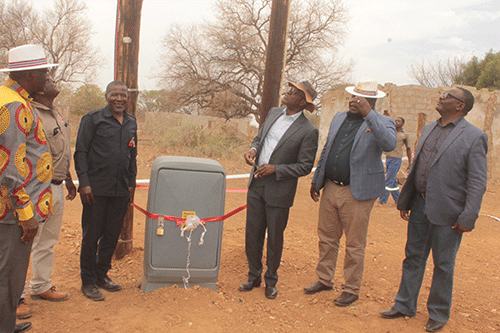Energy minister Tom Alweendo said Cabinet last month approved the National Electricity Policy.
It aims to take electricity to every household, including rural areas in every corner of the country by the year 2040.
However, the challenge in the rural areas is that homesteads are built far apart, which will make it expensive to connect them to power. Government will thus have to find a way around that.
Alweendo made the announcement on Friday during the handover of the Shamundambo village electrification project. This is a project of the Kavango East Regional Council, through the Mukwe Constituency office, who invested N$300 114 to install the 50-Kilovolt-Amperes (50KVA) transformer, and an Aerial Bundled Cable (ABC) line spanning 685 metres.
The minister informed the gathering that the country’s electrification programme began right after independence, when only 3% of villages had electricity. “By 2011, and according to the 2010 national census, this figure had increased to 20%. As we are all aware, we are currently busy with another census, and this percentage will be much higher. In 2012, we realised something needed to change. While we were making some progress, it was not fast enough, especially in public institutions that served entire communities like schools, clinics and police stations,” he noted.
“At the same time in 2012, there were 653 unelectrified schools in the country, with the Kavango region having 167 of them. Cabinet, like your local leaders, had to make tough decisions. We needed to prioritise public institutions, and this meant channelling funds meant for households electrification towards public institutions, ensuring that more people benefited,’’ he added.
Alweendo stated that today, most of these schools have electricity, and all clinics and police stations in this region and country are electrified.
“However, now we need to change and start targeting households. That is easier said than done. Houses are so far from each other, and connecting houses that are spread so far apart is much more expensive. On the other hand, safety is paramount. Electricity, if not handled correctly, can be dangerous. We need to ensure that every house is ready and safe for these connections,’’ he continued. “Overcoming these challenges is crucial to reaching every household. Therefore, we must overcome these challenges before we are able to electrify all households, and that is exactly what government has decided to do,’’ he said.
The National Electrification Policy will establish a fund to ensure that money is made available to execute this new policy.
Alweendo indicated that the latest data from the ministry of education shows that Namibia has about 140 unelectrified schools left countrywide. Most of these schools are newly-built, and several are already connected to solar energy because they are too far from the grid.
“The same source also tells us that there are now only 26 unelectrified schools in the Kavango East region, and we will electrify these by 2025, as per our Harambee Prosperity Plan II,” he said.
-jmuyamba@nepc.com.na


